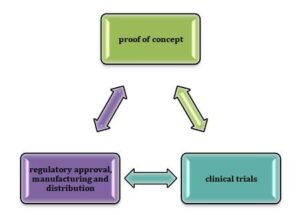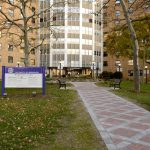Philanthropy & Naturopathic Medicine: What Gives?
Education
David J. Schleich, PhD
Because the healthcare and higher-education sectors are in turmoil and many are worried, the role of philanthropy to keep it all going is important to understand. As enrollments in the education sector contract for a while, the value of contributed revenue, in addition to traditional streams such as tuition, medicinary and patient revenue, is especially great. We need to participate in the bounty of philanthropy in order to hopscotch ahead and to step over landmines such as sharply curtailed tuition revenue and escalating costs. The natural-medicine sector has historically been a difficult sell to philanthropists, but the landscape has gentler zephyrs blowing in our direction these days. (May, 1975; Veatch, 1979)
As the third decade of a new century looms, we need to get better at philanthropy. That philanthropic landscape in medicine and health education is sometimes an unfriendly as well as unfamiliar place. The medical profession’s leaders, spinners, and fundraisers catapult forward, assuming some kind of divine right of orthodoxy, bumping aside competitors hither and yon, and doing the work of marginalizing or removing other perspectives on what health means and how it can be achieved. Our story doesn’t get the audiences it needs often enough in this terrain.
The biomedicine profession has reached a point, though, where its material and political privileges are well beyond its own epistemological and ethical weight class. In the pell-mell battlefront where chronicity, environmental degradation, food sourcing, and wildly fluctuating social determinants are the norm, biomedicine stumbles. In this picaresque melee, the boundary is thin between what is appropriate and what is unseemly. The moral high ground of biomedicine is compromised (high cost, declining outcomes, politically entrenched orthodox control of health services, embarrassing reimbursement). Despite these trends, the medical purposes giving space is skewed in its direction. Even so, our messages are getting through widening cracks and reaching potential philanthropists.
The Meaning of Philanthropy
The word “philanthropy” comes from a Greek word meaning “love of mankind.” Even though the Greek word philanthrôpia, (that is, virtuous giving to those who deserve help) doesn’t quite describe the main contributed revenue portions of medical philanthropy, our income from such sources in the naturopathic medical colleges is rising. There are hybrids in the giving space we inhabit, which are increasingly giving us a hearing. There is another Greek word, philanthrôpos, which is more aligned with community or our family and is more attractive to us. Orthodox philanthropy moves in the direction of the disadvantaged, despite its original focus having been elsewhere. There is the also the word, eleêmosynê, from which we get the word “alms.” Where we land today is somewhere among these etymological possibilities.
If philanthropy is about virtuous giving to the deserving and still is, we have always had a case. It is, though, also about giving with some reciprocity expected. We can do that too. Both lanes require, however, that we get our messages right about our virtue and effectiveness, about why we merit more of the action. Some might disagree that the terrain is better for philanthropic support for naturopathic medicine than it used to be. My experience is that the overall giving space has expanded. And, as John Weeks has often said, naturopathic doctors spar well above their weight class, and in that regard we should expect to get in on the philanthropic action in America more than we have been able to in the past. (Constantelos, 1968)
Let’s dig down more into the notion of philanthropy to see what we dealing with. Underlying the act of giving are recognition, honor, prestige (perhaps), and status (certainly). Dig even deeper into the etymology, and we discover that the giver or the donor at one time actually expected to be paid back somehow – some form of reciprocity, as it were. Pliny the Younger, from the days of the Romans, put it this way: “Honor must be the consequence of generosity.”
Grants, Grants Everywhere, and Ne’er a Drop to Drink
So, what is that terrain like out there? Let’s begin on the grant side. A single word captures the tone: gulp! For example, the growth of National Institutes of Health (NIH) granting is slowing down. Simply summarized, as a case in point from the field of grants, total NIH funding increased 49% from 1990 to 1995, 59% from 1995 to 2000, and 60% from 2000 to 2005. (NIH Almanac) It then leveled off with a 9% increase during 2005-2010, and decreased slightly in 2011 and 2012 and ever since. Compound inflation-adjusted annual growth decreased from 7.8% (during 1994-2003) to 3.4% (during 2003-2007). In mainstream medicine (academic medical centers which dominate the field) and where federal sources account for 65% of biomedical research funds, the landscape is somewhat grim. (NIH Almanac) We are getting far more experience in this channel. The future is friendly.
Research and development programs within large hospital and healthcare systems as well as those within major universities rule this giving space, though. Research programs and treatment programs at smaller educational institutions and at more consistently patient-centered and community-aligned hospitals find it stressful and difficult to peek out from under the shadow of medical community giants such as Mayo, Sanford-Burnham, University Hospitals, Scripps, and the Cleveland Clinic, in order to raise a hand and utter like Oliver, “Some, please.”
Individual & Corporate Philanthropy
What of individual philanthropic contributions outside of government sources and the major and medium-sized foundations? Are we getting traction there? That landscape is robust but fundamentally skewed in the direction of biomedicine. For example, at NUNM I have tried repeatedly to get to the NIKE leaders, who live in our backyard. NIKE has not found our proposals of interest. So far. At the same time, though, Phil Knight, cofounder of NIKE, has an abiding interest in health. He sent a $500 million matching grant in the direction of the Oregon Health and Sciences University (OHSU) for cancer research. OHSU met the challenge, and boom, $1 billion into that biomedicine behemoth’s cash flow. A more modest $19.5 million grant came from William Wirtz to Northwestern Memorial for cancer research. A further $92 million came to the same university from Louis Simpson and Kimberly Ouerrey, which made possible its new 12-story research lab focused on neurodegenerative disorders, cancer, heart disease, and genetics. These are huge numbers. Then there’s Mortimer Zuckerman’s $200 million endowing the Mortimer B. Zuckerman Mind Brain Behavior Institute at Columbia, focused on the neurosciences. There’s more. Robert and Patricia Kern sent $67 million to the Mayo Clinic’s Center for the Science of Health Care Delivery.
In each case, the successes were predicated on reputation, capacity, and cultivation. In each case, the individuals had a well-groomed relationship with the institution they were endowing. The institutions in question are mainstream. Their leaders hobnob in the same receptions, dinners, concerts, sports matches, and newspaper and media spaces. The schmoozing continuum is as elegant as it is expensive, as skilled as it is networked, as continuous as it is strong, and all of this from the inside. The researchers and development professionals of these institutions have windows of opportunity that outside fund-seekers don’t often have. This has to do with the donors not only having a history with such institutions, but also with their wanting to be affiliated with known entities who in turn have experience and success in translational research projects. It has to do with donor familiarity with the mission of the organization receiving the hefty grants. It has to do with the public relations potential of the transactions.
The Art of Attracting Money
Attracting money, whether it is from a government agency such as the NIH, from a charitable organization such as the Meyer Memorial Trust or the Gates Foundation, or from a company interested in cultivating a customer base among naturopathic graduates, is as much an art as it is a science. The process begins with something to sell that we believe in and value and which a potential donor recognizes as relevant and exciting. In this latter channel (corporate giving), there is a routine that boils down to a continuum of canvassing, cultivating, and closing. Once we identify potential donors, we need to work with them to shape a project or a deal, and then to sustain the stewardship along the way to its fulfillment and beyond.
Finding corporate, individual, or foundation partners is time-consuming. It is always strategic. The canvassing is never passive. Rather, systematic canvassing at trade fairs, conventions, symposia, expos, and other events with potential clients in cold calls and care calls, supported by excellent print and online materials, is central to traction and success. Most of all, conscious and sensitive follow-through will propel and grow results for naturopathic schools and for the profession we serve.
In our canvassing efforts we need to show a potential partner/donor/sponsor why we are attracted to his or her business or service at the same time as we communicate as transparently and simply as we can where his or her organization can intersect with our college’s mission and operations. Ultimately, it means that we are qualifying that prospect as a strong “lead” (QRL, or qualified referral lead). The prospect, potentially, is comfortable with and supports what we need to do, and sees how his or her organization fits. Both partners have something to sell.
Before we begin canvassing, we need to have done as much due diligence and intelligence-gathering about the potential prospect as possible. Follow-through begins immediately with the initial approach and moves along a path that quickly merges into a cultivation phase. When values and philosophy are strained, it’s best to give potential money a pass.
Conscious cultivating is about consistent, professional follow-up with the goal of achieving high conversation rates from the vendor/trade floor or client/donor visit to a partner or donor sign-up and action plan. Confirmations are an essential element in the cultivation phase, not only for first levels or indications of interest, but also as an intermediate goal in our cultivation conversations. At this stage, the content of a partnership can be drafted and refined, to build stronger momentum toward closing the first iteration of a partnership.
Many conversations may have to occur as we figure out what the partner needs. We get increasingly precise at expressing how the partnership can manifest in a meaningful ROI (return on investment). We must always keep in mind what our college or school can provide (the reciprocity dimension referenced above) and the role of our Advancement or Development team in assuring that fulfillment of the promise of a partnership. Our canvassing and cultivation conversations with potential partners can be enhanced by scripted text that is well researched and paced to ensure high-quality service and excellent follow-through.
As part of this kind of cultivation, we need to help each other monitor for quality, momentum, and focus. Advancement officers routinely coach each other along this continuum. Coaching conversations are an ideal professional development opportunity because the collective savvy of the team is invaluable, not only in terms of tangibles – such as information about the partner’s products, services and reputation – but also about our college or program’s stewardship capacity.
Four Philanthropists & What They Thought
In this regard, I recently met with 4 philanthropically motivated individuals and their families in the Pacific Northwest. I asked them about what motivated their giving decisions. The top motivator was research “reputation and capacity.” They like to see promising research that is not only innovative, but translational and exciting. They indicated that they were patient, often satisfied with reliable information about progress toward a project’s rollout or breakthroughs in medical treatments. For example, here at NUNM, Bob Moore was thrilled with the university’s progress in rolling out the “Ending Childhood Obesity” program to combat health issues among the young. Bob and Charlee Moore observed how we paid close attention to cause and to social determinants. Very little money generated remarkable results. Modest initial grants led inexorably, with progress, to 7-figure donations for even larger projects. Relationship. Capacity. Scaling.
These same philanthropists liked that ours had become a multiple academic institution which could bring together experts from various disciplines – both inside NUNM and outside NUNM – and partners, to work together on high-risk, high-impact projects. The designs in what we were doing registered as innovative, strategic, and doable. Orthodox philanthropy, these donors understood very well, is a protracted process. Along the way a naturopathic medical school has not only to cultivate in a potential donor awareness of and interest in a project, but also to stir up a compelling story of possibility within a trusted relationship. In this way, action follows. Historically, our clinicians and academic leaders have sometimes lacked the patience and time to pull this off as a routine part of a day’s work in the naturopathic medical education food chain. However, as we build capacity to support our teachers in research, this hesitation lessens.
There is a philosophical and structural challenge worth noting. The orthodox biomedicine research fundraising model does not always fit snugly into our philosophy, nor into our recent history. But we are finding projects which work nevertheless. In order to pitch a 7-figure, multi-year project, what we are proposing, at least in the research funnel, is what you see in Figure 1.
Figure 1. The Research Continuum
 Many of our research and treatment protocol projects begin with goals strongly connected to compassion for particular communities (eg, raising operational and capital equipment cash for community clinics), humanitarianism (sponsoring global health projects), and beneficence (providing alternatives to high-cost/high-risk pharmaceutical solutions for diseases hugely impacted by social determinants and overreliance on synthetic drugs). Thus, the need for us to have partners from the social sciences and public health disciplines in order to proffer studies and community projects with deep reach and impact, grounded in values, science, and mission.
Many of our research and treatment protocol projects begin with goals strongly connected to compassion for particular communities (eg, raising operational and capital equipment cash for community clinics), humanitarianism (sponsoring global health projects), and beneficence (providing alternatives to high-cost/high-risk pharmaceutical solutions for diseases hugely impacted by social determinants and overreliance on synthetic drugs). Thus, the need for us to have partners from the social sciences and public health disciplines in order to proffer studies and community projects with deep reach and impact, grounded in values, science, and mission.
Medical Ethics & Philanthropy
Drilling more deeply into the culture of our colleges, though, we run into another layer of challenge. Many of our professors have top-of-mind tough questions informed by medical ethics and obligations within the doctor/patient relationship. Such questions bring into sharp focus the tension between reciprocity and deontology. What is the duty of a naturopathic physician, after all? Deontology is a normative theory, to be sure, in which choices for the doctor are morally OK or not OK. Do we or do we not, for example, participate in well-funded research that makes assumptions about what patients need – assumptions which may be at odds with what the naturopathic (or the allopathic) doctor believes? What we ought to do (deontic theory) may be at odds with the kind of person the physician/researcher is (aretaic or virtue theory). Collaborations which attract funding need, by their very nature, to be conducted in a high-trust context. Since most of the money available is for work that can potentially ignite this tension, we have to proceed with one eye on some kind of non-consequentialist safety net, and the other eye on taking money which is intended to produce the best outcomes or results for the medicine or the patient. In many studies framed among inter-disciplinary investigators, intention struggles with foreseeing, doing struggles with allowing, and causing struggles with aiding. For example, if a substantial study investigating vaccination efficacy and safety were conducted inter-professionally, how would data stir conflict as findings emerged?
These complex questions, though, are before us whether we welcome them or not, given our need to access some of the energy philanthropic money represents. Our own professional definitions about role play a huge part in this dynamic.
A well-known historical precedent in this conversation concerns Sir William Osler, who contended that the Greek physician’s “love of humanity” is inexorably associated with “the love of his craft” (specifically, philanthropia and philotechnia) and can be a sharp problem. The ideal of the Greek physician, in terms of his relationship with his patient, meant a persisting balance between the 2. (Welborn, 1938) As we consider, then, choices between the best uses of money available (what the donors are interested in funding) and what our top needs are, the cultivating and due diligence processes become crucial. To avoid fundamental conflicts between intention and outcome, between process and philosophy, and between professional context and the public good, a very careful strategy of philanthropic outreach grounded in values is essential for the naturopathic medical community.
If we consider a case in point, say our seeking funding for research and community clinic outreach addressing the opioid epidemic, what would the design – not only of our research effort, but also of our clinical interventions and service – look like? The design of a study, whose purpose it is to reduce the unnecessary prescribing of opioids, would necessitate skilled and precise features organized around these likely dimensions both of a study and of a clinical or community action program, and both of these predicated on donated or contributed funding to expedite.
How does one reduce the level of opioid prescribing, concomitantly eschewing finger-pointing at biomedicine professionals and pharmaceutical interests who have not prevented these problems in the first place? As well, in an effort to expand access to evidence-based treatment, how can healthcare professionals, community agencies, counselors, and pharmaceutical sales people integrate treatment into mainstream health and reach as many patients as possible with substance use disorders, when there are ethical concerns at the front end defining the very problem? Where can naturopathic physicians, for example, contribute as peers in the scaling of harm-reduction efforts in this severe, allopathic and pharmaceutically generated health crisis? Do naturopathic physicians belong in such efforts, or is the philosophical divide too wide?
Part of the answer can be found in the NIH 2-phase peer review system. The well-known Scientific Review Groups (study sections) undertake scientific evaluation of proposed projects and appropriate participants as outlined in the design. At the same time, National Advisory Councils independently make funding recommendations based on the same proposals, inputs, and data. This parallel process can help soften the edges of philosophical differences coupled with differing opinions about methodology and translational research outcomes.
Contributed revenue is crucial for naturopathic medical education. As we scale, its role is essential and increasingly intrinsic to our operational strategy. Understanding philanthropy in all its dimensions is a complex undertaking. Interestingly enough, advancement or development is a kind of microcosm of the larger undertaking of professional formation for naturopathic medicine in North America. What gives, then, is the future of the profession itself.
References:
Constantelos, D. J. (1968). Byzantine Philanthropy and Social Welfare. New Brunswick, NJ: Rutgers University Press.
May, W. F. (December 1975). Code, covenant, contract, or philanthropy. Hastings Center Rep, 5 (6), 29-38.
National Institutes of Health. The NIH Almanac: Appropriations (Section 1). NIH Website. https://www.nih.gov/about-nih/what-we-do/nih-almanac/appropriations-section-1. Accessed April 11, 2019.
Veatch, R. M. (1979). Professional Medical Ethics: The Grounding of Its Principles. J Med Philos, 4 (1), 1-19.
Welborn, M. C. (1938). The Long Tradition: A Study in Fourteenth Century Medical Deontology. In: Cate, J. L. & Anderson, E. N. (Eds.). Medieval and Historiographical Essays in Honor of James Westfall Thompson. Chicago, IL: University of Chicago Press.
 David J. Schleich, PhD, is president and CEO of the National University of Natural Medicine (NUNM), former president of Truestar Health, and former CEO and president of CCNM, where he served from 1996 to 2003. Previous posts have included appointments as vice president academic of Niagara College, and administrative and teaching positions at St. Lawrence College, Swinburne University (Australia) and the University of Alberta. His academic credentials have been earned from the University of Western Ontario (BA), the University of Alberta (MA), Queen’s University (BEd), and the University of Toronto (PhD).
David J. Schleich, PhD, is president and CEO of the National University of Natural Medicine (NUNM), former president of Truestar Health, and former CEO and president of CCNM, where he served from 1996 to 2003. Previous posts have included appointments as vice president academic of Niagara College, and administrative and teaching positions at St. Lawrence College, Swinburne University (Australia) and the University of Alberta. His academic credentials have been earned from the University of Western Ontario (BA), the University of Alberta (MA), Queen’s University (BEd), and the University of Toronto (PhD).










